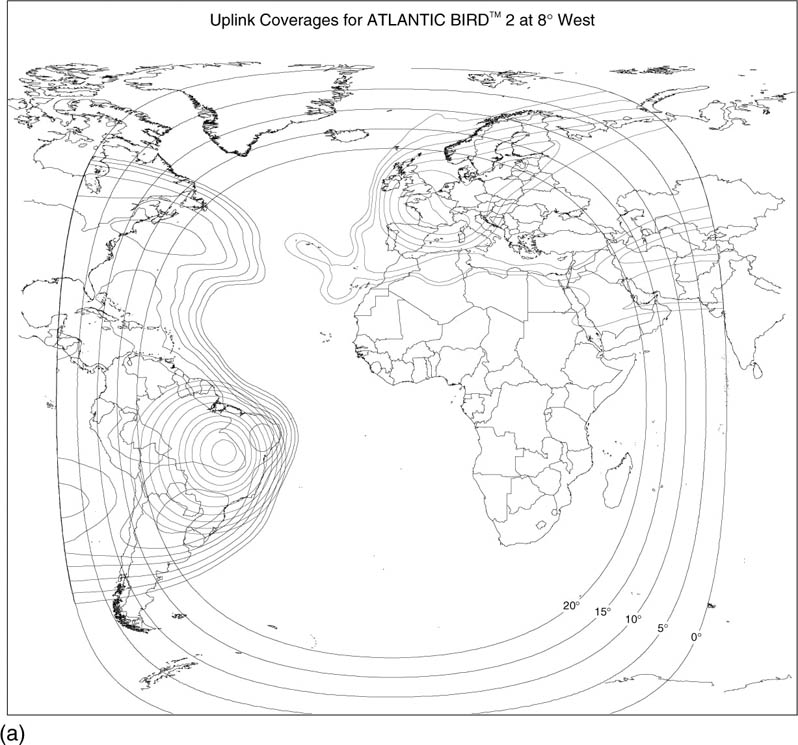The use of satellite capacity
We have now reached the point where we can look at the different types of satellite capacity available, and how satellite capacity is actually accessed. SNG can be used across all types of capacity, but we will look at occasional capacity in particular.
The price structure of capacity, whether it is occasional, long- or short-term lease, pre-emptible or non-pre-emptible, is determined on at least the following four parameters:
(1) period required
(2) bandwidth
(3) power
(4) geographical coverage.
Satellite capacity can be bought for periods from 10 min to 15 years, and this describes the range of services from occasional to long-term lease.
Bandwidth can be bought from a 100 kHz to 150 MHz. For analogue video, the smallest bandwidth channel is 17 MHz, and the largest is 36 MHz, with 27 MHz being a typical channel size. For digital video, the data rate of the channel is usually between 3 and 24 Mbps, with typically 3–6 Mbps for video distribution to cable TV head-ends (distribution points), 4–8 Mbps for news contributions and 8–24 Mbps for sports and events.
Bandwidth is not the only significant parameter on a satellite – there is also the issue of the power required from the satellite, as this is a factor which is one of the key parameters in determining the life of a satellite. If a large amount of transmitted power is required from the satellite to the ground, this will affect the pricing. Similarly (and this is particularly relevant to SNG) if the satellite channel has to have increased gain in the receive stage (to be more ‘sensitive’) this will also affect the pricing. Finally, capacity is priced according to the beam coverage required. There are different beam patterns depending on the frequency band, and the precise geographical coverage is defined.
In the Ku-band, there are ‘spotbeams’ and widebeams (also called broad-beams, ‘superbeams’ or, in Europe, Eurobeams); while in the C-band there are global and hemi-beams.
Spotbeams usually cover an area approximately 3000 km (2000 miles) in diameter, though this can vary from satellite to satellite, and is determined by the design of the antennas of the satellite. Spot beams are often ‘shaped’ to cover landmasses rather than oceans, as obviously the landmass is where signals need to be concentrated.
Ku-band widebeams offer broader coverage, perhaps 8000 km (5000 miles) in diameter, but are only available at lower power levels because the power is spread over a wider area.
In the C-band, a global beam is a wide area low-power beam that covers a significant amount of the Earth’s surface – although plainly it is impossible for a beam to literally cover the whole of the globe. In fact, a global beam symmetrically covers just less than half the hemisphere, with the centre of the beam often centred on the Equator.
A hemi-beam is a C-band beam that covers approximately half the area of a global beam, and might typically cover a continent, or straddle parts of two continents to provide inter-continental connectivity, and is therefore ‘shaped’. It is a higher power beam than the global beam because the power is more focussed onto a specific area.
Each satellite has a defined area of coverage, both for the uplink and the downlink, and the satellite operator defines these in planning a service from a satellite before it has even been launched. The coverage is published by the satellite operator in the form of ‘footprints’, which show the geographical coverage of each of the uplink and the downlink beams from the satellite.
(a) Examples of satellite footprints (© Eutelsat SA)

(b) Examples of satellite footprints (© Eutelsat SA)

